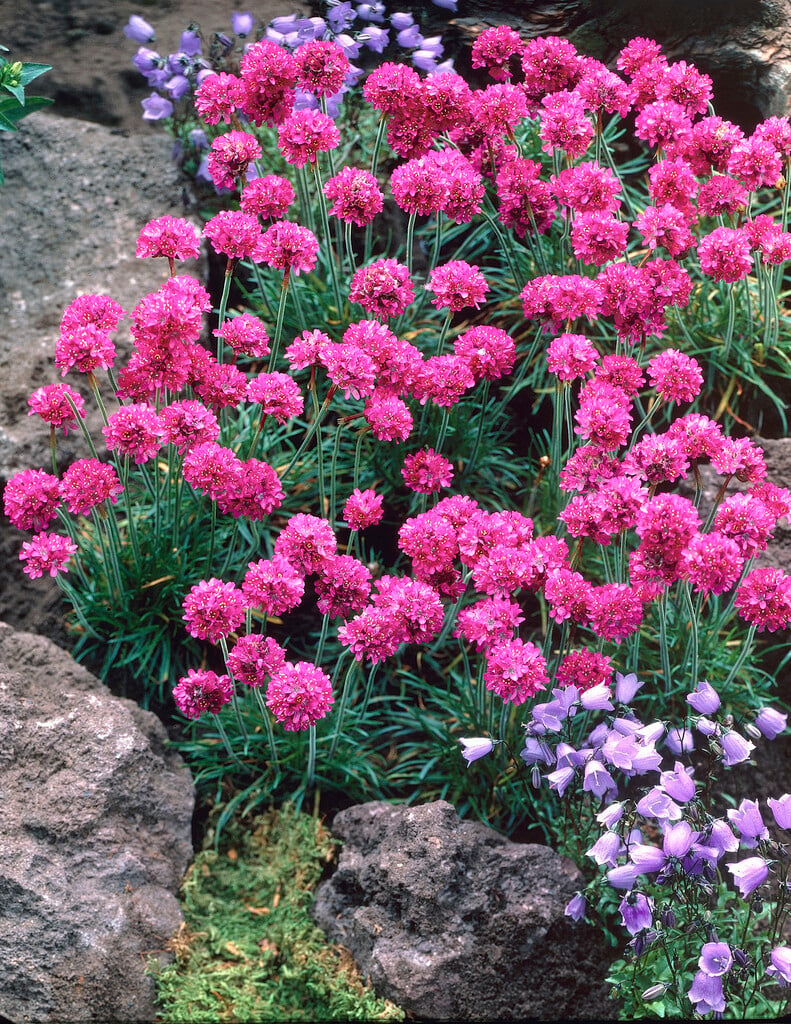Armeria maritima
thrift
A clump-forming evergreen perennial with dense, needle-like dark green leaves and erect stems to 20cm, bearing compact clusters of white, pink or red-purple flowerheads to 2.5cm wide, in late spring and summer
Other common names
cliff rosecushion pink
see morelady's cushion
lady's pincushion
marsh daisy
sea gilliflower
sea grass
sea pink
clustog Fair
Synonyms
Armeria bottendorfensisArmeria vulgaris
Size
Ultimate height
0.1–0.5 metresTime to ultimate height
5–10 yearsUltimate spread
0.1–0.5 metresGrowing conditions
Moisture
Well–drainedpH
Acid, Alkaline, NeutralColour & scent
| Stem | Flower | Foliage | Fruit | |
| Spring | Pink | Green | ||
|---|---|---|---|---|
| Summer | Pink | Green | ||
| Autumn | Green | |||
| Winter | Green |
Position
- Full sun
Aspect
South–facing or North–facing or East–facing or West–facing
Exposure
Exposed or ShelteredDrought resistance
Yes Hardiness
H5Botanical details
- Family
- Plumbaginaceae
- Native to GB / Ireland
- Yes
- Foliage
- Evergreen
- Habit
- Clump forming, Tufted
- Genus
Armeria are evergreen perennials forming tufts or mats of strap-shaped or linear leaves, with long-stalked, dense clusters of small cup-shaped flowers
- Name status
Correct
- Plant range
- N Hemisphere
How to grow
Cultivation
Grow in well-drained soil, suitable for rock garden and trough or the front of a border
Propagation
Propagate by seed, division or basal cuttings
Suggested planting locations and garden types
- Rock garden
- Wildflower meadow
- Coastal
- Cottage and informal garden
- Wildlife gardens
- Ground cover
- Flower borders and beds
- Garden edging
Pruning
No pruning required
Pests
Generally pest-free
Diseases
Generally disease-free
Get involved
The Royal Horticultural Society is the UK’s leading gardening charity. We aim to enrich everyone’s life through plants, and make the UK a greener and more beautiful place.
